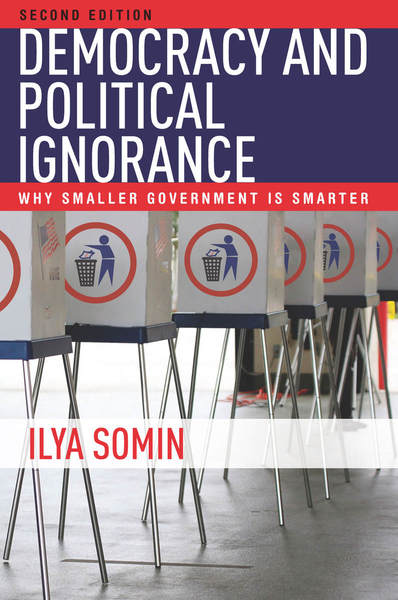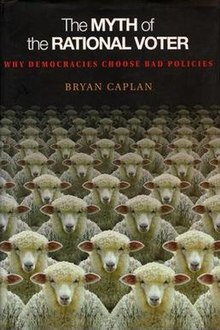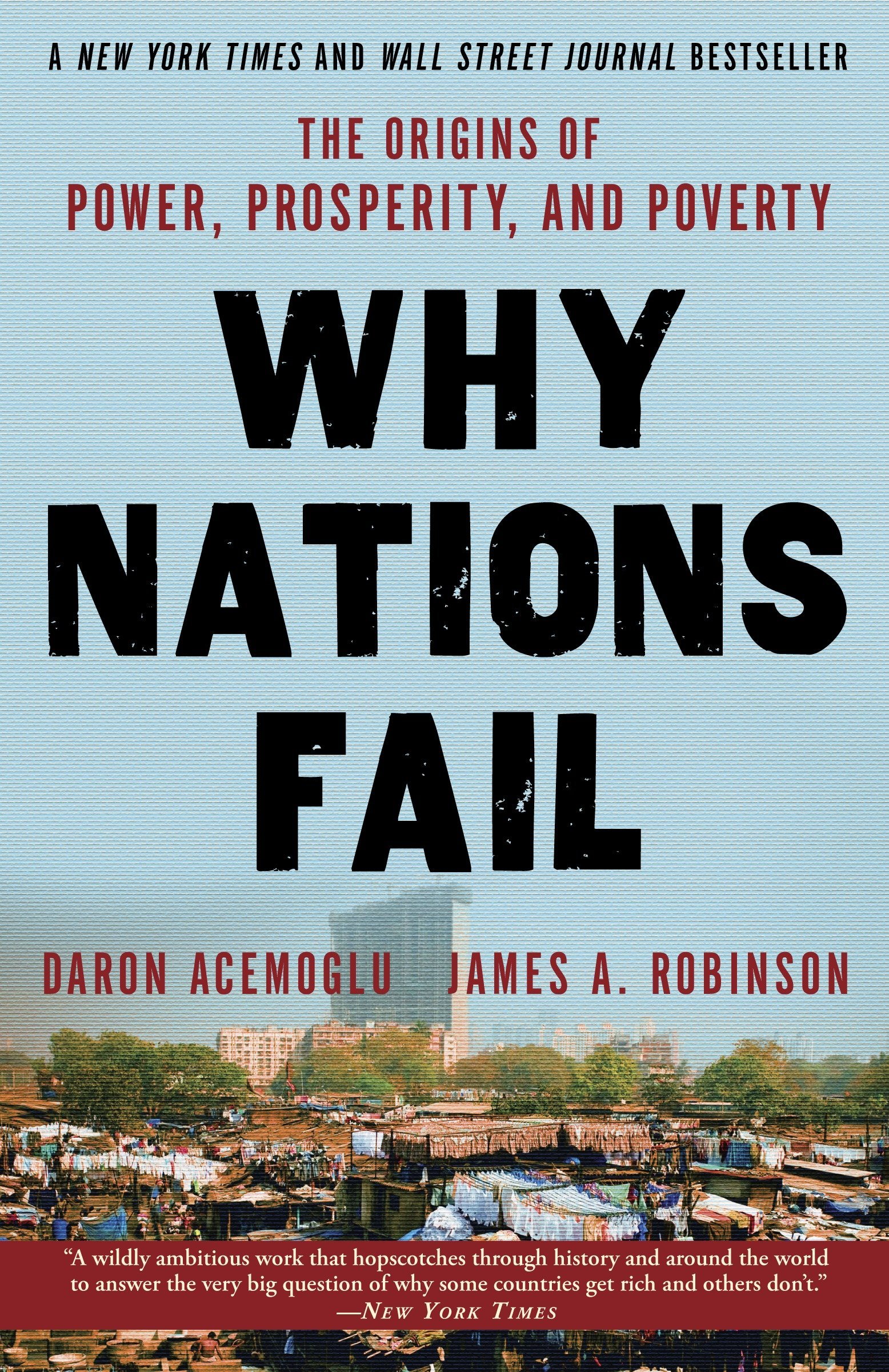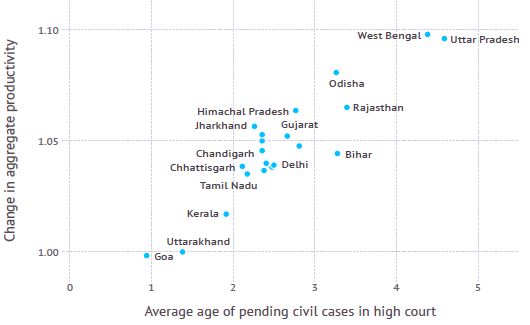This is part of the Stuff I Say at School series.
The Assignment
A critical literature review of political ignorance among the public. This section summarizes the scholarly explanations for the lack of political knowledge among the average citizen.
The Stuff I Said

Though political ignorance is rampant among American citizens, scholars are quick to distinguish between ignorance and stupidity. Despite rising educational attainment and IQ scores, political knowledge among the general public has remained largely stagnant since the 1930s.[ref]Ilya Somin, Democracy and Political Ignorance: Why Smaller Government is Smarter, 2nd ed. (Stanford, CA: Stanford University Press, 2016), 21, 73.[/ref] In fact, Somin determines (in agreement with previous economic theories of democracy) that most political ignorance is rational.[ref]Ibid., Ch. 3. Brennan follows suit. See Against Democracy (Princeton, NJ: Princeton University Press, 2016), Ch. 2.[/ref] Political knowledge is costly in time and effort with little payoff in terms of political influence. At best, an American voter has a 1-in-10 million chance of changing the outcome of a presidential election. This optimistic number occurs only within a few swing states and only if the voter votes for one of the candidates in the two major parties. On average, however, the chance is 1-in-60 million.[ref]Andrew Gelman, Nate Silver, Aaron Edlin, “What is the Probability Your Vote Will Make a Difference?” Economic Inquiry 50:2 (2012): 321-326.[/ref] Numbers improve when it comes to U.S. Congressional elections (1-in-89,000) and state legislator elections (1-in-15,000), but the probability of changing the outcome still remains insanely low.[ref]Casey B. Mulligan, Charles G. Hunter, “The Empirical Frequency of a Pivotal Vote,” Public Choice 116:1-2 (2003): 31-54.[/ref] Brennan argues that, from a strictly mathematical standpoint, the disutility of merely driving to the polls (i.e., the probability and cost of getting into an auto accident) is higher than the utility of the vote cast upon arrival.[ref]Jason Brennan, The Ethics of Voting (Princeton, NJ: Princeton University Press, 2011), 19-20.[/ref] Given these hard data, political ignorance appears to be a rational trade-off. As Somin puts it, “Even a 100 percent altruistic person—someone who always chooses to prioritize the welfare of others over his own whenever the two conflict—would not rationally devote much of his time to acquiring political information for the sake of casting an informed vote. No matter how great the benefits to others of a “correct” electoral outcome, the altruist’s ballot has almost no chance of bringing it about; in a large electorate the change that his vote will be decisive is vanishingly small.”[ref]Somin, Democracy and Political Ignorance, 77.[/ref]
Caplan’s explanation for voter ignorance extends beyond rational ignorance to what he calls rational irrationality: “Since delusional political beliefs are free, the voter consumes until he reaches his “satiation point,” believing whatever makes him feel best. When a person puts on his voting hat, he does not have to give up practical efficacy in exchange for self-image, because he has no practical efficacy to give up in the first place.”[ref]Bryan Caplan, The Myth of the Rational Voter (Princeton, NJ: Princeton University Press, 2007), 132 (italics original).[/ref] Not only does the acquisition of political knowledge provide a low return on investment, but irrationality can provide self-satisfaction at virtually no cost. This makes the choice to be seemingly irrational when it comes to politics understandable and arguably—if paradoxically—rational.
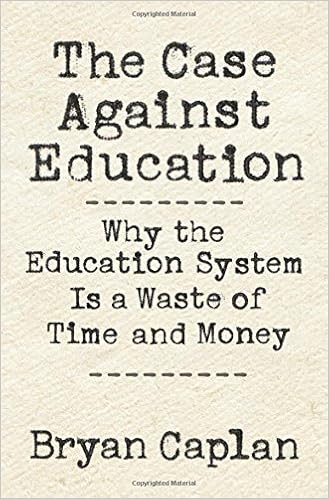
Caplan elsewhere provides another likely explanation for voter ignorance: poor information retention. Drawing on literature in educational psychology, Caplan finds the “transfer of learning” in our educational systems to be less than impressive. Most students are unable to retain or apply their newfound methodological reasoning outside of the classroom and can usually only do so within the classroom after being instructed to apply a particular principle to their problem-solving.[ref]Bryan Caplan, The Case Against Education: Why the Education System is a Waste of Time and Money (Princeton, NJ: Princeton University Press, 2018), 51-59.[/ref] “Telling subjects to use a principle is not transfer,” says psychologist Douglas Detterman. “It is following instructions.”[ref]Ibid., 51.[/ref] This insight complements the rational ignorance theory by demonstrating the difficult and costly nature of true education. This lack of transfer in learning shows up in various surveys of American adults who typically received public K-12 education:
The American Revolution Center tested 1,001 adult Americans’ knowledge of the American Revolution. Eighty-three percent earned failing grades. The Intercollegiate Studies Institute tested over 2,500 adult Americans’ knowledge of American government and American history. Seventy-one percent earned failing grades. Newsweek magazine gave 1,000 Americans the U.S. Citizenship Test. Thirty-eight percent scored too low to become citizens of their own country. On the 2000 American National Election Study, the typical person got 48% of the factual questions right; you would expect 28% by guessing…How many American adults know the Bill of Rights is part of the Constitution? The American Revolution Center reports a dismal 57%, but the truth is far worse. Since there were only four response options, you would expect roughly 25% of the ignorant to guess the right answer by chance…Not knowing the three branches of government isn’t like not knowing Hamlet; it’s like not knowing the letter “h.” If you don’t know that the Civil War came after the Declaration of Independence, you don’t understand American history. If you don’t know which parties control the House and the Senate, you don’t understand American politics.[ref]Ibid., 44.[/ref]
Ian Anson of the University of Maryland introduces a more disturbing angle on the persistence of voter ignorance. In a 2018 study, Anson points to what is known as the Dunning-Kruger effect: “[a] widely cited phenomenon in social psychology [that] holds that individuals with low levels of competence will judge themselves to be more competent than they really are, while those with high levels of competence will underestimate their excellence.”[ref]Ian G. Anson, “Partisanship, Political Knowledge, and the Dunning-Kruger Effect,” Political Psychology 39:5 (2018): 1173.[/ref] This overestimation of one’s abilities and/or knowledge “affect[s] the ability of low achievers to overcome their incompetence because they are unaware that they lag behind others until their objective performance is measured and reported to them.”[ref]Ibid.: 1174.[/ref] After surveying two groups (a total of 2,606 American adults) on political knowledge, Anson had participants evaluate their performance after priming them with partisan cues. The results showed that the worst performers (i.e., the most politically ignorant) were more likely to overestimate their performance. What’s worse, this overconfidence was exacerbated by partisanship. “This result is normatively worrying from the perspective of citizens’ ability to self-correct,” writes Anson, “as it may be that rationally ignorant Americans are especially confident that they are better informed than many of their (partisan) peers. The rationally ignorant fail to overcome their ignorance not just because they face steep costs and lack incentives to improve, but because they are unaware that they are relatively ignorant. They become increasingly hardened to the possibility that they are uninformed when partisan identities are activated, a commonplace feature of most contemporary political discussion.”[ref]Ibid.: 1187.[/ref] Anson’s findings are bolstered by a recent study, which found that (1) “people choose to hear from those who are politically like-minded on topics that have nothing to do with politics…in preference to those with greater expertise on the topic but have different political views,” (2) “all else being equal, people are more influenced by politically like-minded others on nonpolitical issues,” and (3) “people are biased to believe that others who share their political opinions are better at tasks that have nothing to do with politics, even when they have all information they need to make an accurate assessment about who is the expert in the room.”[ref]Joseph Marks, Eloise Copland, Eleanor Loh, Cass R. Sunstein, Tali Sharot, “Epistemic Spillovers: Learning Others’ Political Views Reduces the Ability to Assess and Use Their Expertise in Nonpolitical Domains,” Cognition (forthcoming), 10. https://doi.org/10.1016/j.cognition.2018.10.003.[/ref] This partisan selection process lowers the quality of the obtained information, further inflaming voter tendency toward ignorance and misinformation. Most scholars adhere to a theory of rational ignorance among voters: due to the poor incentives provided by a democratic system, most citizens determine that the costs of political knowledge (including the difficulty of making it stick) outweigh its benefits. Furthermore, the poorly informed suffer from “the double burden of incompetence”[ref]Anson, “Partisanship, Political Knowledge, and the Dunning-Kruger Effect,” 1187.[/ref] due to ignorance of their own ignorance, making change unlikely.


